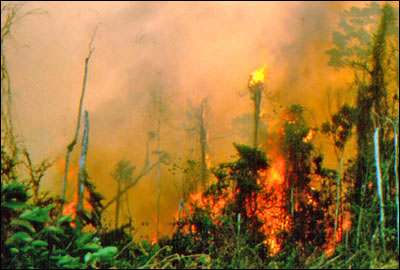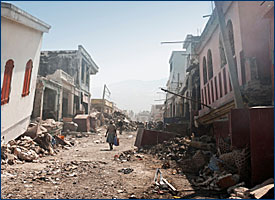Biodiversity Loss
The Attenuation of the Biological World — Part 2
Biodiversity Loss: Crisis in Sustainability
 All these forms of anthropocentric trespass expedite the sick adrenalin rush of interest in every latest disaster, here today, replaced by another one tomorrow. News junkies thrive on bad news; bloggers wait breathlessly to spread the gossip; human-interest stories amid the chaos of melting icecaps, volcanic eruptions, other natural disasters from the tsunamis in the Indian Ocean to seismic shifts six miles beneath the waters off the coast of Haiti; not to mention more obscure problems, like a mid-air collision little reported upon at an astonishing 37,000 feet of altitude between a West African airliner over the Ivory Coast and a vulture, are all fair game for a voracious public whose children are growing up in the shadow of the most dangerous era in recorded history.
All these forms of anthropocentric trespass expedite the sick adrenalin rush of interest in every latest disaster, here today, replaced by another one tomorrow. News junkies thrive on bad news; bloggers wait breathlessly to spread the gossip; human-interest stories amid the chaos of melting icecaps, volcanic eruptions, other natural disasters from the tsunamis in the Indian Ocean to seismic shifts six miles beneath the waters off the coast of Haiti; not to mention more obscure problems, like a mid-air collision little reported upon at an astonishing 37,000 feet of altitude between a West African airliner over the Ivory Coast and a vulture, are all fair game for a voracious public whose children are growing up in the shadow of the most dangerous era in recorded history.
And just as we launch better, ever more precise technologies for observation, our collective unconscious is in ecological disarray; a mess that has not only failed to inhibit, but has actually expedited the loss of species — wild and domestic — at a rate of stunning tragedy. Nobody knows what to do. The British Petroleum accident is but one example of a truism hard to swallow for most, namely, that a president and his trusted cabinet members; a Nobel Prize-winning U.S. Secretary of Energy, governments in general are no longer up to the task of saving the global environment. The “Global 2000 Report” convened during the Carter Administration proved the point only two well that we are mired in a deeply-embedded cynicism that neither satisfies our need for wilderness and solitude (words written in to the first U.S. Wilderness Act) but are perpetuating a self-defeating fatalism when it comes to thinking about a viable future.
 The Club of Rome publication Limits To Growth by Donella H. Meadows, Dennis L. Meadows, Jorgen Randers and William W. Behrens III in 1972, following upon an essay in 1968 by the late ecologist Dr. Garret Hardin, “The Tragedy of the Commons” (*Science, 162[1968]:1243-1248) are now ascribed to by most students of ecological economics and sustainability (see Dancing Star Foundation video), along with the Malthusian premonition that our runaway population growth is clearly outstripping the earth’s non-renewable resources, her biological fundaments and her ability to revive herself. Those who have grown up with an orientation to spiritual ecology and animal rights would differ substantially from those in the scientific community who continue to call birds and mammals and other unique creatures “resources.” John Muir was horrified at such misuse of the language. A tree, he argued, cannot hide; it cannot run. Any fool can cut it down. It takes a tender heart, a wise soul to leave it be.
The Club of Rome publication Limits To Growth by Donella H. Meadows, Dennis L. Meadows, Jorgen Randers and William W. Behrens III in 1972, following upon an essay in 1968 by the late ecologist Dr. Garret Hardin, “The Tragedy of the Commons” (*Science, 162[1968]:1243-1248) are now ascribed to by most students of ecological economics and sustainability (see Dancing Star Foundation video), along with the Malthusian premonition that our runaway population growth is clearly outstripping the earth’s non-renewable resources, her biological fundaments and her ability to revive herself. Those who have grown up with an orientation to spiritual ecology and animal rights would differ substantially from those in the scientific community who continue to call birds and mammals and other unique creatures “resources.” John Muir was horrified at such misuse of the language. A tree, he argued, cannot hide; it cannot run. Any fool can cut it down. It takes a tender heart, a wise soul to leave it be.
While some will claim that the Earth is resilient, that natural disasters and extinction spasms, as well as the ebb and flow of temperatures and glaciers are the norm, only ecological illiterates would rally to the notion — and many have — that there is nothing to worry about. That human business as usual is the business of the planet.
Part 1: Lack of Conservation Progress
Part 3: The Importance of Conserving Animal Rights

